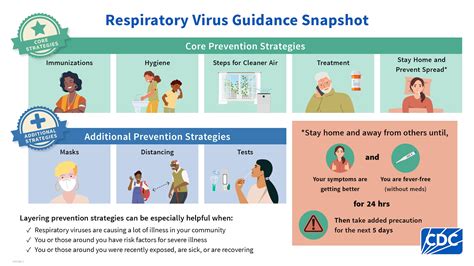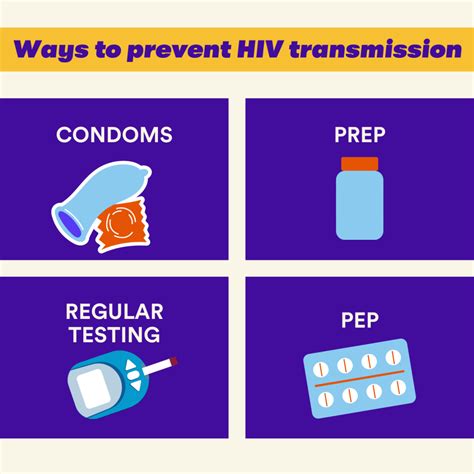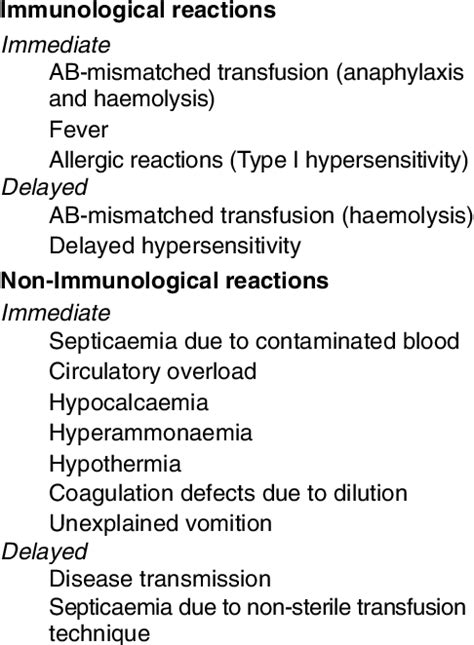Intro
Discover the impact of respiratory viruses in adults, including symptoms, treatment, and prevention of influenza, bronchiolitis, and pneumonia, to protect against common respiratory infections.
Respiratory viruses are a significant cause of illness in adults, leading to a substantial burden on healthcare systems and economies worldwide. These viruses can cause a range of symptoms, from mild to severe, and can affect anyone, regardless of age or health status. In recent years, the impact of respiratory viruses has been highlighted by the COVID-19 pandemic, which has had a devastating effect on global health and economies. Understanding the different types of respiratory viruses, their transmission, symptoms, and treatment options is crucial for preventing and managing these infections.
Respiratory viruses are highly contagious and can spread quickly through communities, often during the winter months when people are more likely to be indoors and in close proximity to each other. The most common respiratory viruses in adults include influenza, respiratory syncytial virus (RSV), adenovirus, human metapneumovirus, and coronaviruses. Each of these viruses has distinct characteristics, transmission patterns, and clinical presentations, making diagnosis and treatment challenging. Furthermore, respiratory viruses can also lead to complications, such as pneumonia, bronchitis, and exacerbations of underlying conditions like asthma and chronic obstructive pulmonary disease (COPD).
The importance of understanding respiratory viruses in adults cannot be overstated. These infections can have a significant impact on an individual's quality of life, leading to missed workdays, decreased productivity, and increased healthcare utilization. Moreover, certain groups, such as older adults, young children, and those with underlying health conditions, are at higher risk of developing severe illness and complications from respiratory viruses. Therefore, it is essential to stay informed about the latest research, prevention strategies, and treatment options to mitigate the effects of these infections.
Types of Respiratory Viruses

There are several types of respiratory viruses that can affect adults, each with its unique characteristics and clinical presentation. Influenza viruses, for example, are a major cause of respiratory illness during the winter months, with three main types: A, B, and C. Influenza A viruses are further divided into subtypes based on their hemagglutinin (H) and neuraminidase (N) proteins. RSV, on the other hand, is a common cause of respiratory illness in older adults and those with underlying health conditions. Adenoviruses are highly contagious and can cause a range of symptoms, from mild to severe, including common cold symptoms, bronchitis, and pneumonia.
Influenza Viruses
Influenza viruses are a significant cause of respiratory illness in adults, with the majority of cases occurring during the winter months. The flu season typically starts in October and can last until May, with the peak season usually occurring between December and February. Influenza viruses are highly contagious and can spread quickly through communities, often through respiratory droplets, contact with contaminated surfaces, and close contact with infected individuals.Respiratory Syncytial Virus (RSV)
RSV is a common cause of respiratory illness in older adults and those with underlying health conditions. The virus is highly contagious and can spread quickly through communities, often during the winter months. RSV infections can range from mild to severe, with symptoms including runny nose, cough, fever, and shortness of breath. In severe cases, RSV can lead to pneumonia, bronchitis, and exacerbations of underlying conditions like COPD.Adenoviruses
Adenoviruses are highly contagious and can cause a range of symptoms, from mild to severe. The viruses are commonly spread through respiratory droplets, contact with contaminated surfaces, and close contact with infected individuals. Adenovirus infections can lead to common cold symptoms, bronchitis, and pneumonia, with severe cases requiring hospitalization.Transmission and Prevention

Respiratory viruses are highly contagious and can spread quickly through communities. The primary mode of transmission is through respiratory droplets, which can be released when an infected individual talks, coughs, or sneezes. Close contact with infected individuals, contaminated surfaces, and poor hygiene practices can also contribute to the spread of these viruses. Preventing the transmission of respiratory viruses requires a multi-faceted approach, including:
- Practicing good hygiene, such as frequent handwashing and proper disposal of tissues
- Avoiding close contact with infected individuals
- Staying home when sick to prevent spreading the infection to others
- Getting vaccinated against influenza and other respiratory viruses
- Using masks and respirators in healthcare settings and other high-risk areas
Vaccination
Vaccination is a critical component of preventing respiratory virus infections. The influenza vaccine, for example, is recommended for all adults, with certain groups, such as older adults, young children, and those with underlying health conditions, being at higher risk of developing severe illness and complications. The RSV vaccine is also available for older adults and those with underlying health conditions, although its use is not as widespread as the influenza vaccine.Mask Use
Mask use is an effective way to prevent the transmission of respiratory viruses, particularly in healthcare settings and other high-risk areas. Masks can help reduce the release of respiratory droplets and prevent the inhalation of contaminated air. There are different types of masks available, including surgical masks and respirators, each with its unique characteristics and uses.Symptoms and Diagnosis

The symptoms of respiratory virus infections can range from mild to severe, depending on the type of virus, the individual's age, and underlying health status. Common symptoms include:
- Runny nose
- Cough
- Fever
- Shortness of breath
- Fatigue
- Headache
- Sore throat
Diagnosing respiratory virus infections can be challenging, as the symptoms can be similar to those of other conditions. Healthcare providers often use a combination of physical examination, medical history, and laboratory tests to diagnose respiratory virus infections. Laboratory tests may include:
- Rapid influenza diagnostic tests (RIDTs)
- Polymerase chain reaction (PCR) tests
- Serological tests
Physical Examination
A physical examination is an essential component of diagnosing respiratory virus infections. Healthcare providers will typically assess the individual's vital signs, including temperature, blood pressure, and oxygen saturation. They will also perform a physical examination, including auscultation of the lungs, to assess for signs of respiratory illness.Medical History
A medical history is also crucial in diagnosing respiratory virus infections. Healthcare providers will typically ask questions about the individual's symptoms, including when they started, how long they have lasted, and any factors that exacerbate or relieve them. They will also ask about the individual's medical history, including any underlying health conditions, medications, and allergies.Treatment and Management

The treatment and management of respiratory virus infections depend on the type of virus, the individual's age, and underlying health status. Mild cases of respiratory virus infections can often be managed with self-care measures, such as:
- Rest
- Hydration
- Over-the-counter medications, such as pain relievers and decongestants
- Humidifiers and saline nasal sprays
Severe cases of respiratory virus infections may require hospitalization and supportive care, including:
- Oxygen therapy
- Mechanical ventilation
- Antiviral medications
- Antibiotics for secondary bacterial infections
Antiviral Medications
Antiviral medications are available for certain types of respiratory virus infections, including influenza and RSV. These medications can help reduce the severity and duration of symptoms, as well as prevent complications. However, they are most effective when started early in the course of the illness, and their use should be guided by a healthcare provider.Supportive Care
Supportive care is an essential component of managing respiratory virus infections. This may include oxygen therapy, mechanical ventilation, and other interventions to support the individual's respiratory and cardiovascular systems. Healthcare providers will also monitor the individual's vital signs and adjust treatment as needed to prevent complications.Complications and Long-Term Effects

Respiratory virus infections can lead to complications, particularly in older adults and those with underlying health conditions. Common complications include:
- Pneumonia
- Bronchitis
- Exacerbations of underlying conditions, such as COPD and asthma
- Secondary bacterial infections
- Respiratory failure
The long-term effects of respiratory virus infections can also be significant, particularly in individuals with underlying health conditions. These may include:
- Chronic respiratory disease
- Cardiovascular disease
- Neurological disorders
- Mental health disorders
Pneumonia
Pneumonia is a common complication of respiratory virus infections, particularly in older adults and those with underlying health conditions. Pneumonia can be caused by a variety of organisms, including bacteria, viruses, and fungi. Treatment typically involves antibiotics, oxygen therapy, and supportive care.Exacerbations of Underlying Conditions
Respiratory virus infections can exacerbate underlying conditions, such as COPD and asthma. These exacerbations can lead to increased symptoms, reduced lung function, and decreased quality of life. Treatment typically involves bronchodilators, corticosteroids, and other medications to manage symptoms and prevent complications.What are the most common respiratory viruses in adults?
+The most common respiratory viruses in adults include influenza, respiratory syncytial virus (RSV), adenovirus, human metapneumovirus, and coronaviruses.
How can I prevent the transmission of respiratory viruses?
+Preventing the transmission of respiratory viruses requires a multi-faceted approach, including practicing good hygiene, avoiding close contact with infected individuals, staying home when sick, getting vaccinated, and using masks and respirators in healthcare settings and other high-risk areas.
What are the symptoms of respiratory virus infections?
+The symptoms of respiratory virus infections can range from mild to severe, depending on the type of virus, the individual's age, and underlying health status. Common symptoms include runny nose, cough, fever, shortness of breath, fatigue, headache, and sore throat.
How are respiratory virus infections diagnosed?
+Diagnosing respiratory virus infections can be challenging, as the symptoms can be similar to those of other conditions. Healthcare providers often use a combination of physical examination, medical history, and laboratory tests to diagnose respiratory virus infections.
What are the treatment options for respiratory virus infections?
+The treatment and management of respiratory virus infections depend on the type of virus, the individual's age, and underlying health status. Mild cases can often be managed with self-care measures, while severe cases may require hospitalization and supportive care, including oxygen therapy, mechanical ventilation, and antiviral medications.
In conclusion, respiratory viruses are a significant cause of illness in adults, leading to a substantial burden on healthcare systems and economies worldwide. Understanding the different types of respiratory viruses, their transmission, symptoms, and treatment options is crucial for preventing and managing these infections. By staying informed and taking proactive steps to prevent the transmission of respiratory viruses, individuals can reduce their risk of developing severe illness and complications. We invite readers to share their thoughts and experiences with respiratory viruses, and to take action to protect themselves and their loved ones from these infections.
